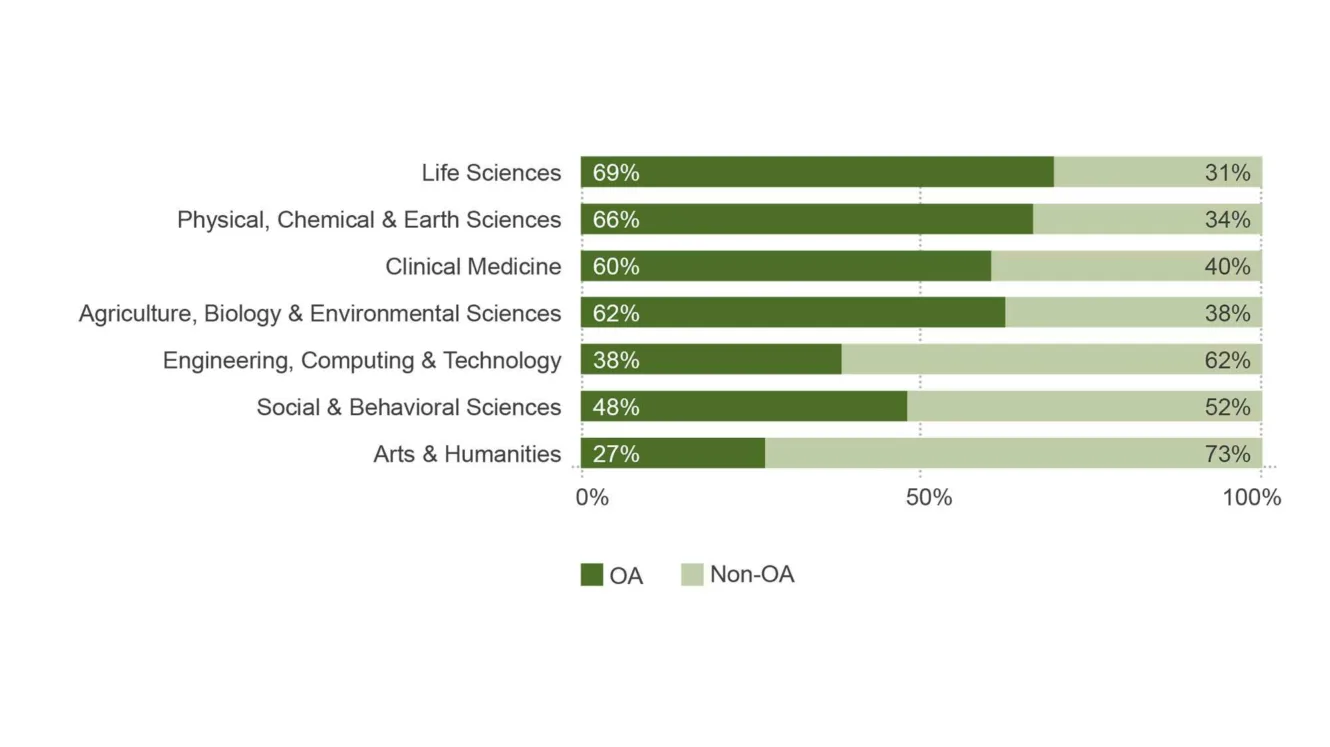Worldwide efforts to support Open Access
A SERI bibliometric analysis shows how Switzerland compares internationally in terms of Open Access publications. Isabelle Maye, a scientific advisor at SERI who is responsible for bibliometric analyses, provides insight into the most important findings.

SERI has been conducting bibliometric analyses for years now. How would you describe bibliometrics in a nutshell?
Basically, bibliometrics is the analysis of scientific publications – but with regard to statistics, not content. At SERI, we calculate various indicators like the number of publications, impact (citation analysis), partnerships and the split between OA and non-OA publications.
What are bibliometric analyses used for?
Bibliometrics helps with benchmarking scientific research. All the indicators I just mentioned tell us something about the state of research in Switzerland. Bibliometrics can be used to assess Switzerland's international standing in terms of the production of scientific publications and their impact on other researchers. We can also identify the partners that Swiss researchers collaborate with most frequently.
Report on Open Access publications in Switzerland
SERI has been publishing bibliometric analyses of publications by researchers in Switzerland for several years. Scientific publications in Switzerland, 2008–2020 (PDF, 1 MB, 23.09.2022) was published in 2022. It contains the most important bibliometric indicators as well as two more detailed analyses on Open Access and quantum publications. In 2023, SERI published for the first time a special report on open access (Open Access Publications, 2008-2020 (PDF, 8 MB, 01.11.2023)).
What are the most important findings in the latest report on OA publications?
There has been a movement towards Open Access for several years now, not only in Switzerland but also in many other countries. This report traces the development of OA publication numbers starting in 2008 and shows that researchers are increasingly making their results available in this way. Globally, the share of OA publications has grown from 34% of all publications to 48%. In Switzerland, the trend was even more striking: the share has risen from 43% to 60%, placing Switzerland among the leading countries.
Are there any surprising findings?
Yes, absolutely. Some countries that are not among the major producers of publications, for example Indonesia, Chile or Finland, have clearly embraced OA and in some cases lead the rankings in this type of publication.
It's also interesting to see the difference in the proportion of OA publications depending on the research area: a great deal of publications are OA in the life sciences or clinical medicine, whereas this is rarely the case in the humanities and social sciences.

What do these results tell us about Switzerland as a centre of research and innovation?
As a small country, Switzerland does very well in an international comparison. It is currently one of the countries with the highest proportion of OA publications.
What stands out the most about the international comparison?
Although the OA publication mode is supported worldwide, not all countries follow the same strategy and some still do not have a large proportion of OA publications.
How do you go about developing the bibliometrics?
In bibliometrics, publications are evaluated quantitatively on the basis of various characteristics or criteria. In my analysis I rely on data from several of Clarivate's Web of Science indexes, in particular the expanded science citation index (SCIE) and the citation indexes for social sciences (SSCIE), arts and humanities (A&HCI) and emerging sources (ESCI). These data collections contain the bibliographic data on articles published in the most important scientific journals worldwide. The addresses of the relevant research institutions can be used to break down scientific production by country as well as to examine cooperation between institutions. The information provided by researchers also allows the impact of a publication to be determined, based on how often an article is cited in other publications and thus the attention it has received worldwide. Finally, each publication is classed as OA or non-OA, which is used to determine the proportion of OA publications. This is how we calculate the indicators that interest us the most.
Contact
Author



